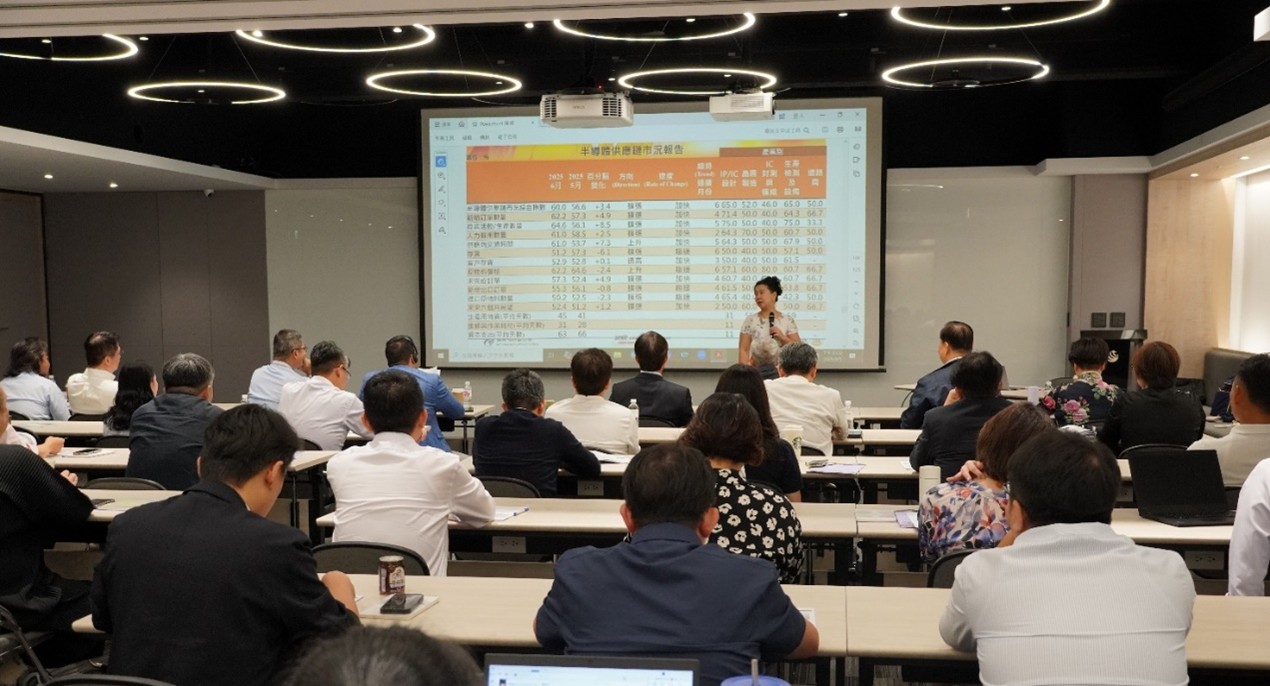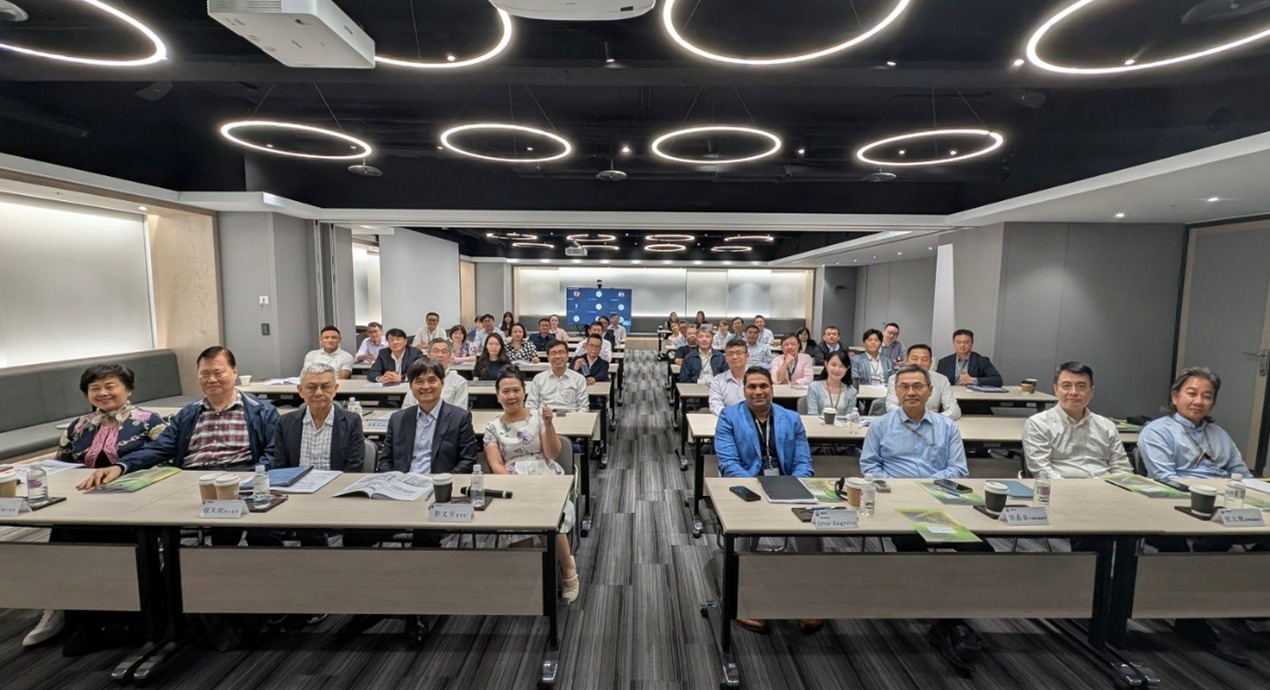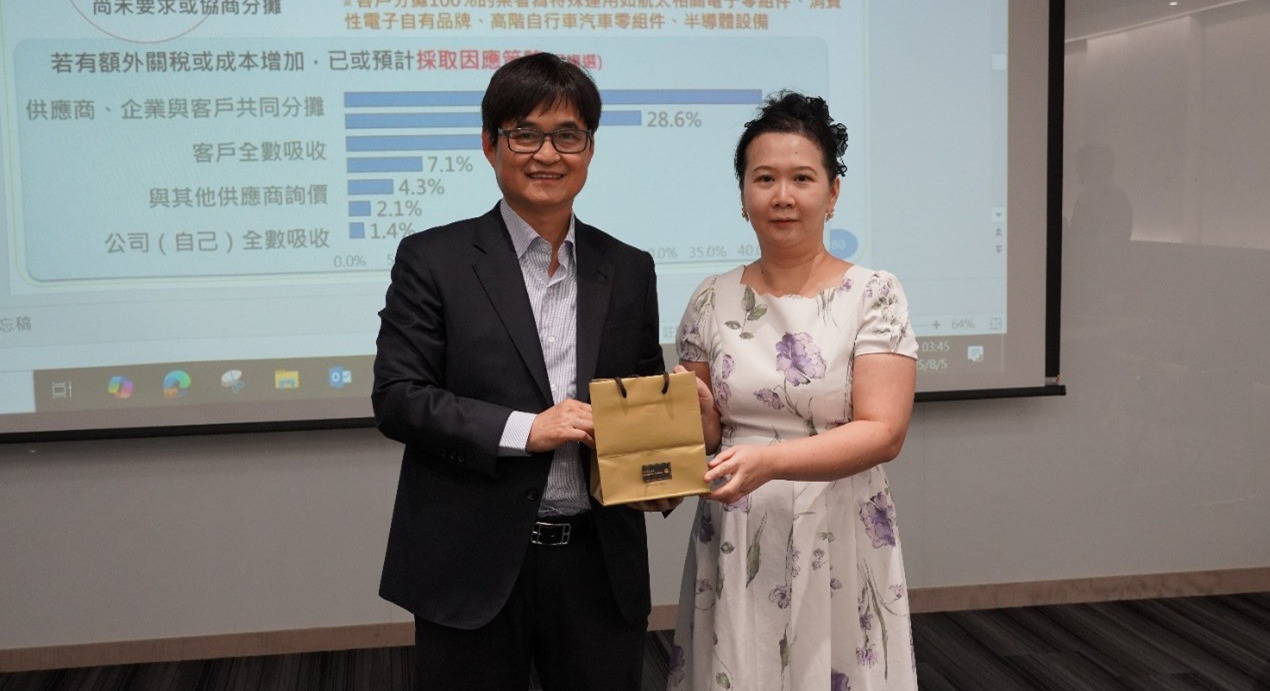From Cost Efficiency to Strategic Security: Diversified Layouts and Precise Strategic Choices
In the rapidly shifting global political and economic landscape, businesses now face not just isolated risks, but systemic structural changes. Dr. Chen Shin-Hui, Associate Research Fellow at the Chung-Hua Institution for Economic Research, was invited to this session to deliver a speech titled "Prospects for U.S.-China Economic Relations and Taiwan's Industry under Trump 2.0" Dr. Chen offered an in-depth analysis of how, since 2018, the world has shifted from the traditional concept of "globalization" toward a supply chain restructuring model centered on national strategic interests. Through macro-level political and economic analysis combined with incisive industry data, she revealed strategies for corporate survival and growth in an era of upheaval.
Paradigm Shift: From Cost Efficiency to Strategic Security
In the past, the core principle of globalization was to relocate production to the lowest-cost regions. However, Dr. Chen pointed out that today's international trends have completely changed. Governments now prioritize national strategic security over pure economic efficiency. This means ensuring a stable supply of strategic materials has become a cornerstone of national security. At the same time, safeguarding domestic jobs, particularly in key industries that cannot be easily offshored, is directly tied to social stability and public support. Ultimately, these factors are closely linked to financial flows and guiding corporate investment, which affect not only economic development but also electoral outcomes. This shift means that corporate decisions on plant locations and investments must place geopolitical risks, policy stability, and supply chain resilience at the core of strategic planning.
The Reality of Supply Chain Restructuring: Diversification and Strategic Choices
With ongoing tensions and trade war between the U.S. and China, supply chain restructuring is now irreversible. Citing survey data, Dr. Chen noted that since 2023, a significant proportion of manufacturers have increased production line assets, primarily to "develop new products or business models" and to "diversify manufacturing." This strategic adjustment is reflected in efforts to diversify markets and customer bases, reducing reliance on any single market or large client, even if this leads to substantially higher operating costs. At the same time, companies are no longer blindly expanding production, but instead making precise strategic layouts based on product characteristics. For instance, advanced processes and R&D centers are retained in the U.S. or Taiwan, while mature OEM manufacturing is shifted to ASEAN regions. Dr. Chen emphasized that the supply chain is like a complex ecosystem that cannot be fully relocated. While Taiwan lacks major end-user brands, it plays an irreplaceable role in the global industrial chain. The effects of tariffs and trade barriers ultimately ripple through every link in the supply chain.
Corporate Response Playbook: From Passive Order-Taking to Active Client Selection, From Single Products to System Integration
In an environment full of uncertainty, corporate management thinking must evolve. First, in terms of financial risk management, in an era of high interest rates and fluctuating exchange rate, what was once considered a non-issue, "de-dollarization", is becoming a reality. Companies should actively assess the adoption of local currency transactions or diversified currency arrangements to mitigate the risk of foreign exchange loss. Second, in customer relationship management, Taiwan's manufacturing industry has shifted from a "take any order" approach to a more cautious customer selection strategy. It is also necessary to closely monitor the financial health of both upstream and downstream supply chain partners to prevent potential disruption risks. Finally, and most critically, is the transformation of the business model, from a single hardware or manufacturing focus to integrating customer needs and delivering complete systems and service solutions. Market demand has shifted from pure hardware toward comprehensive offerings that include design, integration, and ongoing maintenance. This requires companies to become deeply involved in customers' design processes and, through cross-disciplinary strategic alliances, jointly create greater added value.
Future and Outlook: Finding a New Normal in Times of Change
Extremities are becoming the new normal. Whether through the shock of COVID-19 or geopolitical confrontations, the qualitative transformation of global industry structures is accelerating. Dr. Chen reminded the audience not to be misled by superficial economic indicators, such as GDP growth concentrated in a few industries like AI, while ignoring the difficulties faced by the majority of companies. For businesses, it is essential to re-examine customer structures, supply chain resilience, and product value propositions, while actively embracing digital transformation and cross-industry collaboration. "Sustainable development" should be viewed as an opportunity for differentiation. Only in this way can companies stand firm and create a future amid this turbulent era.



